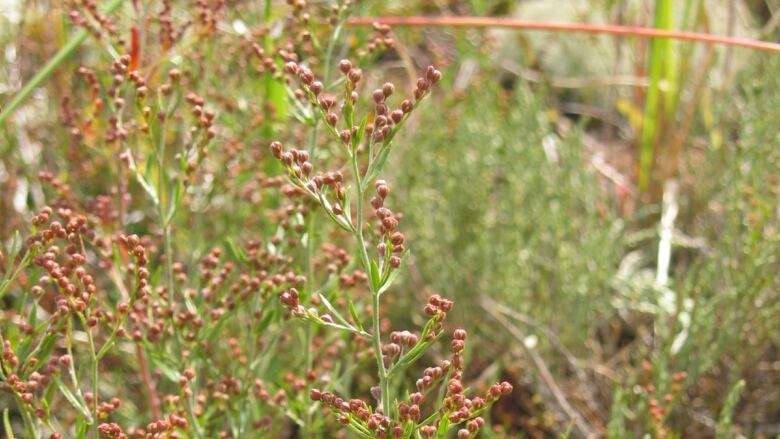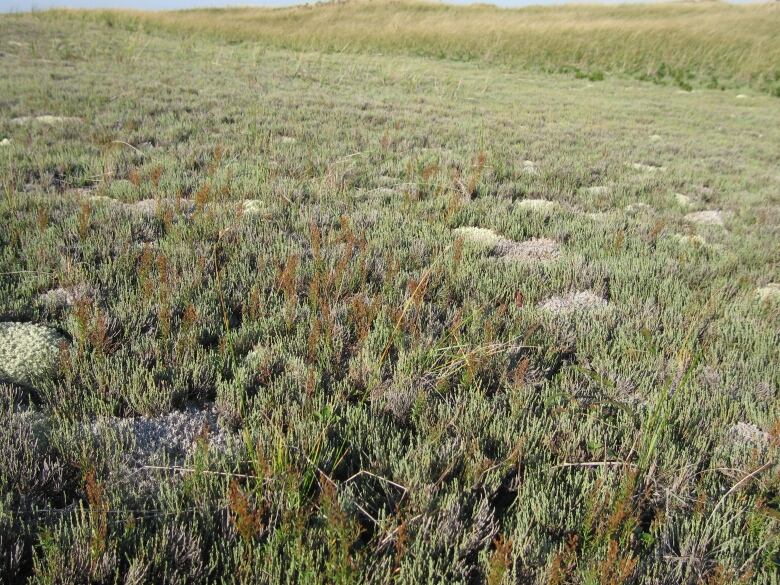Nature Conservancy trying to protect rare Beach Pinweed on P.E.I.
Conway Sandhills and Eastern N.B. only places in the world the plant grows

The Nature Conservancy of Canada is trying to buy up land on P.E.I., in order to protect an extremely rare plant which grows in sand dunes.
The Gulf of St. Lawrence Beach Pinweed can only be found on the east coast of New Brunswick and on the P.E.I. Conway Sandhills, which is a series of islands on the north shore, from Malpeque to Jacques Cartier Provincial Park.
A recent survey found while the population has remained stable over the last 9 years, the plants have been negatively impacted by storm surges, which havecaused erosion in thesandhills.

But there have been several challenges, because the land keeps shifting, according to Julie Vasseur, P.E.I. program director for the Nature Conservancy of Canada.
"A couple of years ago when we were in the middle of acquiring one of the properties on the sandhills, it actually breached in twopieces," said Vasseur. "A lot of the titles are very, very old, and they're based off of natural features, and in the Conway, sandhills change all the time. So it can actually become a challenge out there to actually find a person's property."
Rare habitat
Another challenge is its choice of a rare habitat; the Beach Pinweed only appears in stable sand dunes, which have had time to become vegetative.

Researchers have been able to stake out lines around plants they have found, to monitor the future impact of storm surges.
Vasseur saidshe believes there could be Beach Pinweed on land not yet owned by the Conservancy.
"It's kind of like a bit of a challenge to me because it is our goal to eventually see the whole Conway Sandhills protected," she said. "So it just motivates me to try harder and get out there and talk to more people."
The Nature Conservancy says the only way to protect the plant is to put up markers around it, and educate land owners and people who visit the area about its importance.












_(720p).jpg)


 OFFICIAL HD MUSIC VIDEO.jpg)
.jpg)



























































































